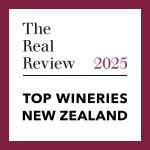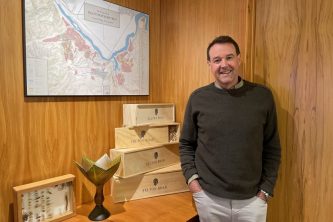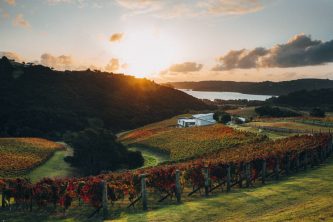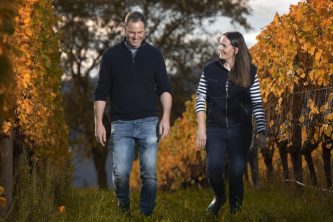Stephen Wong MW in The Real Review | May 12, 2025
 It is that time of year—the culmination of a year’s worth of tastings and reviews, averaging just under 2,000 wines annually, to bring you The Real Review Top Wineries of New Zealand 2025.
It is that time of year—the culmination of a year’s worth of tastings and reviews, averaging just under 2,000 wines annually, to bring you The Real Review Top Wineries of New Zealand 2025.
This year’s list showcases 141 producers at the top of their game in Aotearoa New Zealand. We also see several new entrants to the list, including some newer producers who are making waves with different varieties and styles.
What we hope this list will do is introduce you to the true breadth and diversity which is possible in New Zealand wine.

However, it’s not all change and certainly not for change’s sake! After running The Real Review’s algorithm across all of the tasting notes for the past two years, when the dust settled, Felton Road re-emerged as the Winery of the Year, with Destiny Bay also retaining its position at number two. I cover the reasons for Felton Road retaining their top spot in a separate article published later this week. In third spot is Te Whare Ra from Marlborough.
Significant gains were made by South Island producers who had a less challenging vintage in 2023 than their cousins in the north. This was mostly at the expense of Hawke’s Bay producers who bore the brunt of Cyclone Gabrielle that year, destroying vineyards, buildings and vines.

Despite the challenges, there were some beautiful wines snatched from the jaws of defeat, as amply demonstrated by Te Mata Estate rising to seventh place. I also cover the specific effects of this vintage disparity between north and south in a separate piece.
Looking at the most visible changes to the rankings, Central Otago continues to strengthen its position on the list. Last year, the region stood out for claiming 23% of the list. This year, it is represented by 42 producers (who are either wholly or partly in the region as some own vineyards in multiple regions). This translates to 29.7% which is a reflection of a seemingly unbroken run of good vintages for the region, increased uptake of organic and regenerative farming, investment from both existing and new interests.

Another region which is punching above its weight is North Canterbury, which now claims 10 wineries on the list, or 7.1% of the total (up from 5.7% a year ago). For comparison, it represents 3% of the country’s total vineyard planted area. Despite the difficulties of 2023, the Wairarapa (which also has 3% of the national vineyard) held its ground, with 14 producers representing 10% of the total list. Those holding down the fort will be looking forward to the 2024s entering the market, with all signs pointing to it being a spectacular vintage for the region.
The other region to note in all of this is Marlborough, whose story is hidden in the details. Despite having the lion’s share of the list (admittedly, they do have the overwhelming majority of the country’s planted area), the wineries which have climbed into the top ranks are not all known for their sauvignon blanc. In fact, a few of them don’t even release one at all, and several of those who do make sauvignon do not make it in the typical style of the region’s calling card.
This is not to deride New Zealand’s most identifiable and commercially successful style of wine but rather to point out that the behemoth of Marlborough is more diverse and detailed than many think. The wineries who have made into the top echelons of the list are as committed to making excellent pinot noir, outstanding chardonnay, arresting aromatics and effusive sparkling wines on top of their benchmark sauvignons.
Over the past few weeks, we have also introduced you to the finalists for our new awards categories; Vigneron of the Year, Rising Star of the Year, and five Wines of the Year in different styles. We are delighted to announce the winners for all eight of these awards at the end of this article. And to address the elephant in the room, yes, all of the winners are producers in Central Otago or Marlborough (A Thousand Gods have their winery in Canterbury but their wines are all from the Churton Vineyard in the Southern Valleys of Marlborough).
This was not a deliberate statement or an intended result; however, we judged each category on their own against their peers and in each case the panel selected the wine or producer they felt best embodied the spirit and substance of the award. It is perhaps a testament to the great work being done in these two regions that they have claimed all the awards between them, but it should not be overlooked that great wine and good work is being made throughout the country—as can be clearly seen in the wider diversity in the list of finalists.
What we hope the Top Wineries list will do is introduce you to the true breadth and diversity which is possible in New Zealand wine, and invite you to celebrate the wonderful wealth of great wine made in Aotearoa. Happy reading!
Taste the Top Wineries of New Zealand 2025
Join TRR in celebrating the Top Wineries of New Zealand. Meet the winemakers and taste their must-try wines at TRR tasting event and dinner. Auckland: Dinner (Thu 5 June) | Tasting (Sat 7 June)






